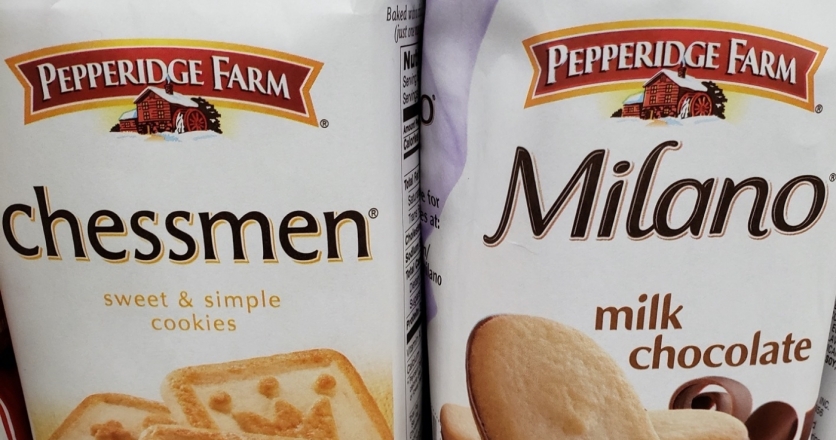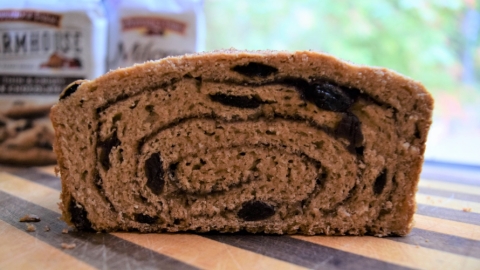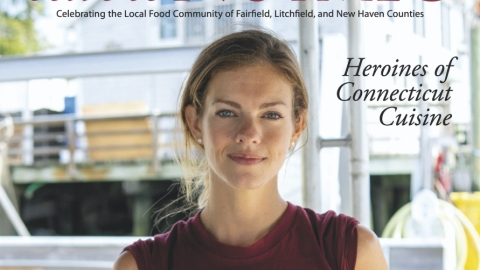Distinctively Connecticut
Born in 1897, Margaret Fogarty was not a country girl. She grew up in New York and on Long Island, graduated at the top of her high school class, and worked in Manhattan as bookkeeper for a brokerage. After marrying broker Henry Rudkin in 1923, the red-haired, green-eyed Margaret spent another six years in the city before moving to a 320-acre farm in Fairfield, Connecticut, named for a huge Pepperidge tree in the front yard.
Then the stock market crashed, and the Great Depression that followed left her family (and many others) in a financial spiral, so to make ends meet, she learned how to butcher hogs, picked apples, and sold turkeys from their new farm. Margaret’s youngest son suffered from serious allergies and was unable to eat processed foods, like white bread. She baked him a loaf of all-natural, stone-ground wheat bread, which she said, “should have been sent to the Smithsonian Institution as a sample of Stone Age bread, for it was hard as a rock and about one inch high.” But she fiddled with the recipe until it was delicious as well as nutritious. The boy’s doctor was impressed with the taste and the ingredients and recommended it to his other patients, starting her on a baker’s path.
In 1937, she sold her first loaves through Mecurio’s Market in Fairfield at the astronomical price of 25¢ apiece. This was more than twice the price of factory bread, and the grocer was skeptical that anyone would buy her wares. However, there were some who wanted “real bread” that was healthy and old-fashioned, and business boomed, expanding to other groceries in Connecticut and New York City. “You’ve got to want something first,” she said, “and then you have to go after it with all your heart and soul.”
She named her burgeoning enterprise “Pepperidge Farm,” installed ovens in the property’s former horse stables, and hired numerous local women to help. By 1939, she had 45 people working for her, despite the Depression. Her husband turned from Wall Street banker to delivery man and began to manage the accounts for her growing business. By 1947, she had opened a large commercial bakery in Norwalk that could produce 40,000 loaves an hour, maintaining the high-quality ingredients of Grade AA butter, fresh eggs, fresh whole milk, dark honey, and unsulphured molasses. Three years later, Margaret began appearing in commercials transmitted over the new technology of television.
During the 1950s, Margaret offered benefits to employees, paid good wages with flexible hours, and continued to hire women whenever possible. During a trip to Europe, she discovered fancy chocolate cookies and bought the rights to produce them in America. The “distinctive” Milano was developed in Norwalk a few years later. In 1956, the company began their “Pepperidge Farm Remembers” advertising campaign, one of the most successful and longest-running in American history. It boosted the brand to national fame, and a year later, she was named one of the top female executives in the United States.
In 1961, she sold the company to Campbell’s Soup and served as the first female member of their board. The following year, she introduced a version of the fish-shaped crackers that she enjoyed in Switzerland, and they became the bestselling Goldfish, eventually produced at 3,000 crackers per second. She retired in 1966 and, a year later, died of breast cancer, soon after her supportive husband had passed.
Three years later, the struggling Apollo 13 astronauts nearly starved, unable to eat their dehydrated meals. Luckily, they were saved by – you guessed it – loaves of Pepperidge Farm bread, including a cheese bread made specially for them. Every slice was eaten, and the bread became a part of lunar exploration, almost unimaginably distant from the Fairfield oven that started it all.
By that time, Rudkin’s 1963 Pepperidge Farm Cookbook was a perennial bestseller, with recipes for some of the company’s classics alongside her own personal favorites. Our adaptation of Pepperidge Farms’ classic raisin-cinnamon bread brings to mind our childhood breakfast tables and the hardworking women who didn’t want us to face the day without a full belly.








